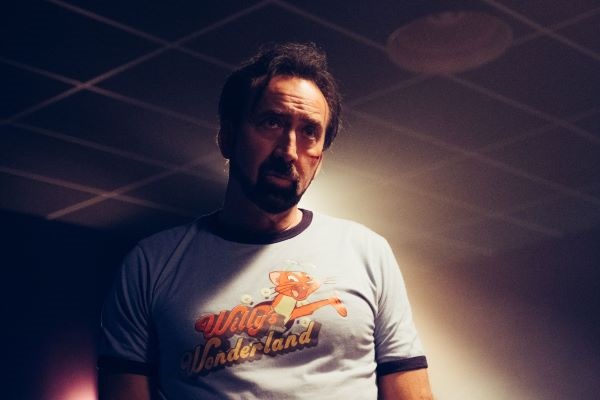Anyone who has spent more than five minutes perusing the labyrinth of YouTube will likely have come across a peculiar franchise. A name whispered in internet forums with dedicated theorists, fanatical fans, and a deep, twisted, and confusing lore. Five Nights At Freddy’s (FNAF), for all of Scott Cawthon’s creative faults, has ruptured a mould and captivated the imaginations of millions. With spin-off games, merchandise, fan games and Youtubers bankrolls, the tale of a haunted pizzeria where maniacally murderous animatronics hunt down the night staff has become a tremendously successful hit. The issue is, someone beat them to the movie premiere.
Kevin Lewis‘ Willy’s Wonderland is an unashamed rip-off. And though creative licensing is toyed with, and the ownership of ideas is a complex behemoth, there are more than passing resemblances between G.O. Parson’s screenplay and the FNAF franchise. From the basic premise, the film unintentionally takes its inspirational negatives but magnifies them. Parson’s writing feels rushed, pushy and forceful, detracting from what the focus should have been – absurd gore, imaginative designs and an action-horror with comedic elements not taking itself seriously. A silent drifter (Nicolas Cage) is conned into cleaning a run-down arcade and diner, but as the night moves on, he comes to realise that the animatronic singers are out for blood, and the town is concealing a secret.
The injection of unnecessary lore isn’t the only distracting feature, the inclusion of a plucky gang of youths determined to avenge the deaths of those before bogs down the film’s otherwise decent pacing with mundane characterisation, watery relationships and downright painful delivery. Unintentionally, the lifelessness of the supporting cast enables the animatronics to take on momentum, and along with Cage are the film’s minor triumphs. But there are also gleams of humour throughout, with imaginatively grim deaths and running gags involving Cage’s meticulous cleaning regime. There’s a basic understanding of what the audience desires, but the niggling addiction to stuffing the carcass full of tropes and mystery makes aspects of the film become undigestible, bloated and crying out as desperately trying to seem edgy. And you don’t get edgier than a Dutch angle, which immediately informs the audience of David Newbert‘s limited scope with cinematography.
To Cage’s credit, his performance throughout Willy’s Wonderland is an engaging one, especially given the removal of his key feature – his voice. This changes the dynamics with the animatronics as they sing, jest and make jolly with Cage to enhance the connection the audience has in their protagonist. Each of Willy’s crew, from Siren Sara to Gus the Gorilla, come with intricate and colourful designs with a sense of individualism, often moving in more fluid ways than the jilted animations one would expect.
With the violence, cartoonish setting and the elements of an arcade – one would have expectations of the film’s audio having a certain clout. Though Émoi‘s music score provides an array of colourful and mind-numbingly addictive ditties and tunes, the actual effects fail to provide a sense of weight, punch and tangibility. When a character punches an animatronic or loses an arm to a seven-foot Aligator, there’s an expected crunch that never manifests.
The set-up was right there; Nicholas Cage battles possessed children’s animatronics – how can this fail to entertain? Willy’s Wonderland has the benefit of marvellous practical effects, an engaging premise, and the base components for endless fun. Just remove the gristle and unnecessary infusion of lore into a hollow cavity which squanders the opportunity to beat its influence to the punch.
Available on DVD from Mon 12 Apr and On-demand from Mon 19 Apr 2021
